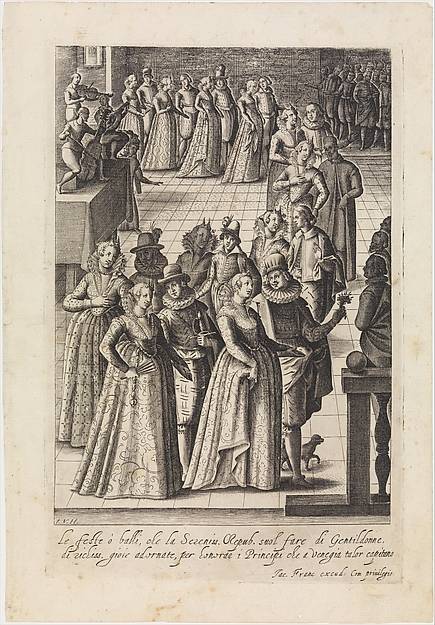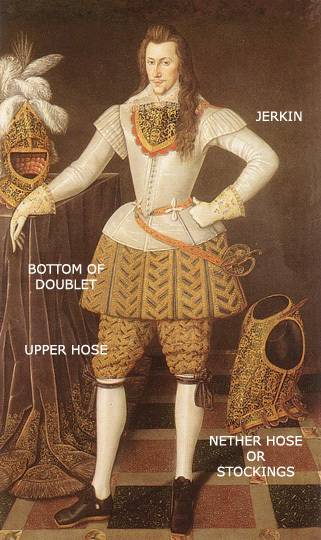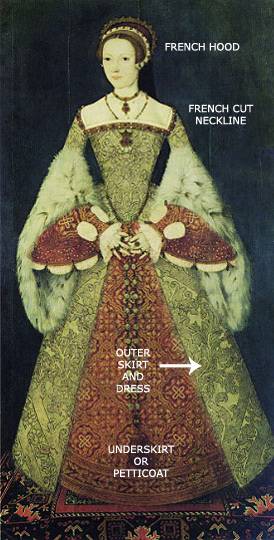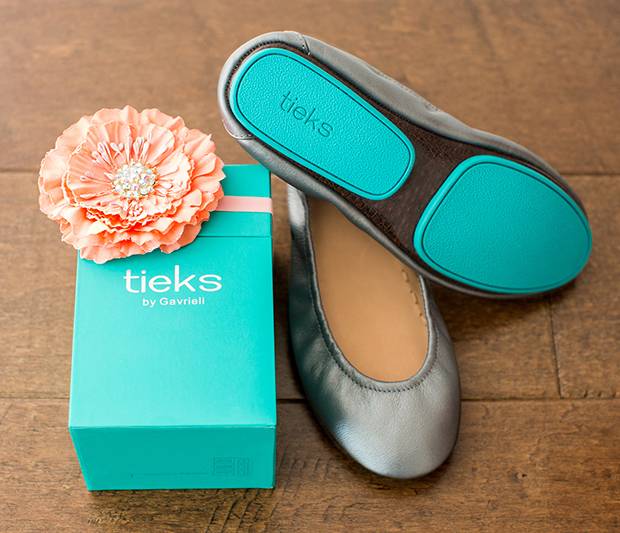Fashion-Forward in the Fifteenth
"What not to wear" once depended on your social status: duchess or milkmaid, prince or pope. If you broke rank, there could be a price to pay - a big one!
What's your fashion go-to for school, home or play? Jeans? Birkenstocks? Earrings, braids, flip flops, or Under Armour, Nike, or LuluLemon? A school uniform? Alex and Ani bracelets or a pearl choker? Keeping up with the latest fashion statements can be a challenge, but it's nothing new.
Maybe you've seen pictures of your parents when they were your age, wearing crop tops, fishnet stockings, bell-bottom jeans or perms. These fashion trends reflect the times in which they your parents lived.
The Renaissance may have started the trend towards trends. People all over Western Europe were tuned into image. This new interest was sparked by both the production and proliferation of mirrors, as well as their version of new media, which spawned a sort of fifteenth-century selfie.
Artists like Leonardo da Vinci, for example, started to depict the human form in more natural ways. In fact, he may have been the first artist to work in virtual reality, and the famous Mona Lisa may be one of the oldest pieces of 3D artwork!
Fashion also became more important due to expanded trade throughout Europe and into the East via the Silk Road, where new fabrics and dyes fed a growing demand among the wealthy nobles in Italy and France for high fashion. Merchants began to offer accessories like hair pieces and jewelry that added detail and personality to outfits and appearances. Tailoring was also transformed due to new techniques in cutting and sewing, and there was a new emphasis on creating tighter-fitting clothing to emphasize body shape.

Those Stylin' Guys Wear Blouses and Hose
Noblemen during the Renaissance were just as concerned with their appearance as women. Men sported blouses with a high neckline, collar, and sleeves made of lace. Wealthier men often added more layers on top of their shirt; first, a fitted top called a doublet, and on top of that, a tight-fitting, jacket-like piece called a jerkin. On the bottoms, men would wear hose that were poofy above the knee, and tight "nether" hose that went from the knees to the ankles. Some men ignored the hose; instead, they wore... skirts!

To compliment the look, men often wore feathers on their knees and hats and sported pointy shoes, which laced up their legs.
Men were also very concerned with hair. Beards went in and out of style, but bobs, shaved heads and brimmed, crown-shaped hats remained popular throughout the majority of the Renaissance period.
Women's Ready-to-Wear—Not!
Noblewomen wore heavy, colorful, expensive dresses that required the help of servants just to put them on. Their dresses were often bejeweled, cut low to expose the woman's neckline, and had sleeves lined with fur.

The tight-fitting bodice and full skirts might be tricky to negotiate today, with our busy lives, but upper-class women of that period would not have engaged in housework, doing chores or hard physical labor. But before you go, "whoa, lucky them!" consider: they also couldn't have fun playing soccer, riding a bike, or going to the movies with friends.
Not so fortunate for most women whose families were not in the noble classes. In contrast, their plain dresses were underpinned with paddings like the crescent shaped cushions worn around the hips known as bum roles, or farthingales, which were hoops that held out a woman's skirt.
And shoe styles? Comfort was not even a factor. Wealthy women teetered around on decorative but extremely painful and uncomfortable shoes, designed to accentuate their posture and highlight their beauty. Pianella, or chopines, for example, were very popular in Venice during this time. Similar to today's open-toed mules and platform sandals, these shoes supposedly gave a woman the appearance of added height and kept her dress out of the muck of the dirty city streets; however, in reality, women really wore them to show off their attractive gaits. They were so difficult to walk in, in fact, that one often required a servant walking on either side of her to keep her from falling over!

Perhaps you're thinking, "It can't be worth the pain and embarrassment of potentially falling over!" But then think about what the heights many girls go to for the right shoes for prom only to kick them off after a long evening.
Regardless, pianella did die out towards the end of the Renaissance, and most women came to their senses and started to wear rounder, more comfortable shoes that laced in the front and were almost like slippers or ballet flats; similar to one of my personal favorite types of shoes, tieks.

So think about that; waking up in the morning and seeing your dad wearing tights. Your mom falling over because of the shoes she's wearing. Wearing hoops under your dress because it is so heavy. Not being able to play sports or go outside! And even though the fashion expectations were harsh and crazy back then, think about what people in a few hundred, or even ten years from now might think about the clothing we wear today, but consider perfectly normal! Maybe it will be discovered that nylon causes cancer, or people will gag at the thought of wearing denim. The fashion world is an ever changing and fast paced world that has been evolving since the Renaissance, and has helped people learn more about cultures, art, and self-identity. If it hadn't been for Renaissance fashion and the birth of trends and self-interest in appearance, right now you would be wearing a boring, uncomfortable piece of cloth that you would call your clothing.
Want to Learn More?
- "Chopines" The Met, The Metropolitan Museum of Art, 30 Nov, -0001. http://www.metmuseum.org/art/collection/search/82448. Accessed on 6 Jun, 2018.
- Franco, Giacomo. "Habiti Delle Donne Venetiane (Dress of Venetian Women)" The Met, The Metropolitan Museum of Art, 30 Nov, -0001. http://www.metmuseum.org/art/collection/search/350079. Accessed on 6 Jun, 2018.
- Franco, Giacomo. "Le Feste o Balli from Habiti D'huomeni Et Donne Venetiane" The Met, The Metropolitan Museum of Art, 30 Nov, -0001. http://www.metmuseum.org/art/collection/search/401196. Accessed on 6 Jun, 2018.
- Hanson, Paige L. "Renaissance Clothing and Sumptaury Laws" Costume Design, University of Michigan-Dearborn, 30 Nov, -0001. http://www-personal.umd.umich.edu/~cfinlay/sumptuary.html. Accessed on 6 Jun, 2018.
- Museum, Albert. "Clothing and Jewellery" Victoria and Albert Museum, 31 Jan, 2013. http://www.vam.ac.uk/content/articles/r/clothing-and-jewellery. Accessed on 7 Jun, 2018.
- Perkins, Sheryl. "Fashion and Clothing of the Renaissance" Blankstyle, 26 Sep, 2013. http://www.blankstyle.com/articles/fashion-and-clothing-renaissance. Accessed on 8 Jun, 2018.
- "Renaissance Fashion" A Renaissance Magazine, 30 Nov, -0001. http://renaissancepoetry0.weebly.com/renaissance-fashion.html. Accessed on 8 Jun, 2018.
- Rublack, Ulinka. "Renaissance Fashion: The Birth of Power Dressing" History Today, 1 Jan, 2011. http://www.historytoday.com/ulinka-rublack/renaissance-fashion-birth-power-dressing. Accessed on 8 Jun, 2018.
- "Tieks, a Type of Ballet Flat" Cinnamon and Style, 30 Nov, -0001. http://cinnamonandstyle.com/2016/08/08/tieks/comment-page-1/. Accessed on 8 Jun, 2018.